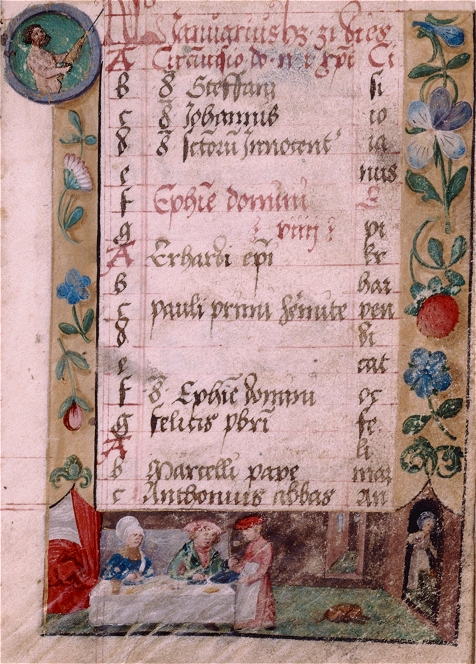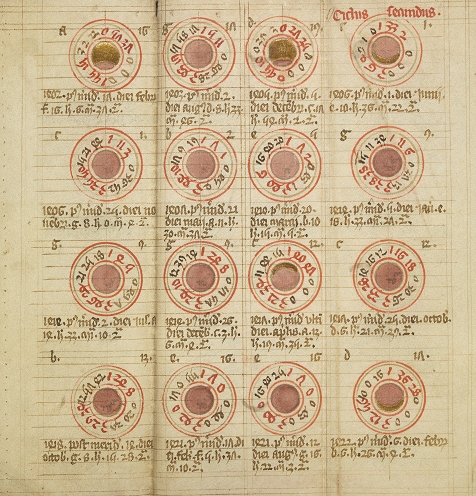- 1
- St Ethelwold (ca. 912-984)
- Lammas: The day started by breaking up a one year old quarter loaf of bread and leaving it for the birds. Bread played a very important part in this holiday, and
often entire courses consisted of nothing but bread dishes. At the end of the feast, everyone was given a loaf of bread with a lighted candle in it. The celebrants formed a circle and the steward led them around the hall three times. The candles were snuffed and all but one-quarter of the bread was eaten. The remainder would be saved for the next year to feed the birds.
- 2
- St Eusebius (d. ca. 371)
- St Stephen (d. 257)
- 3
- St Walthof (d. ca. 1160)
- 6
- St Sixtus (d. 258)
- 8
- St Dominic (1170-1221)
- 9
- St Oswald (604-642)
- 10
- St Laurence (d. 258)
- 11
- St Susanna (d. ca. 295)
- 12
- St Clare (1193-1253)
- 13
- St Hippolytus (d. ca. 252)
- St Radegund (518-587)
- 16
- St Roch (1350-1380)
- St Stephen of Hungary (977-1038)
- 17
- St Hyacinth (1185-1257)
- St Clare of Montefalco (d. 1308)
- 18
- St Helen (d. ca. 326)
- 19
- St. Canutus (d. 1086)
- 20
- St Bernard (1091-1153)
- 22
- St Symphorianus (d. ca. 200)
- 23
- St Philip Beniti (1233-1385)
- 24
- St Bartholomew (first century)
- St Ouen (ca. 600-684)
- 25
- St Ebbe (d. 683)
- St Louis (1215-1270)
- 26
- St Zephryinus (d. 217)
- 27
- St Caesarius (ca. 470-542)
- St Monica (332-387)
- 28
- St Augustine (354-430)
- 30
- St Fergus (eighth century)
- St Aidan (d. 651)
Photo credits: (Related Resources) (1) Opening page of calendar, elaborate border design with human figures, 1530, Digital Collections, The New York Public Library on Wikimedia Commons, (2) Medieval folding almanac, ca. 15th century, Wellcome Library on Wikimedia Commons, Creative Commons CC BY 4.0

